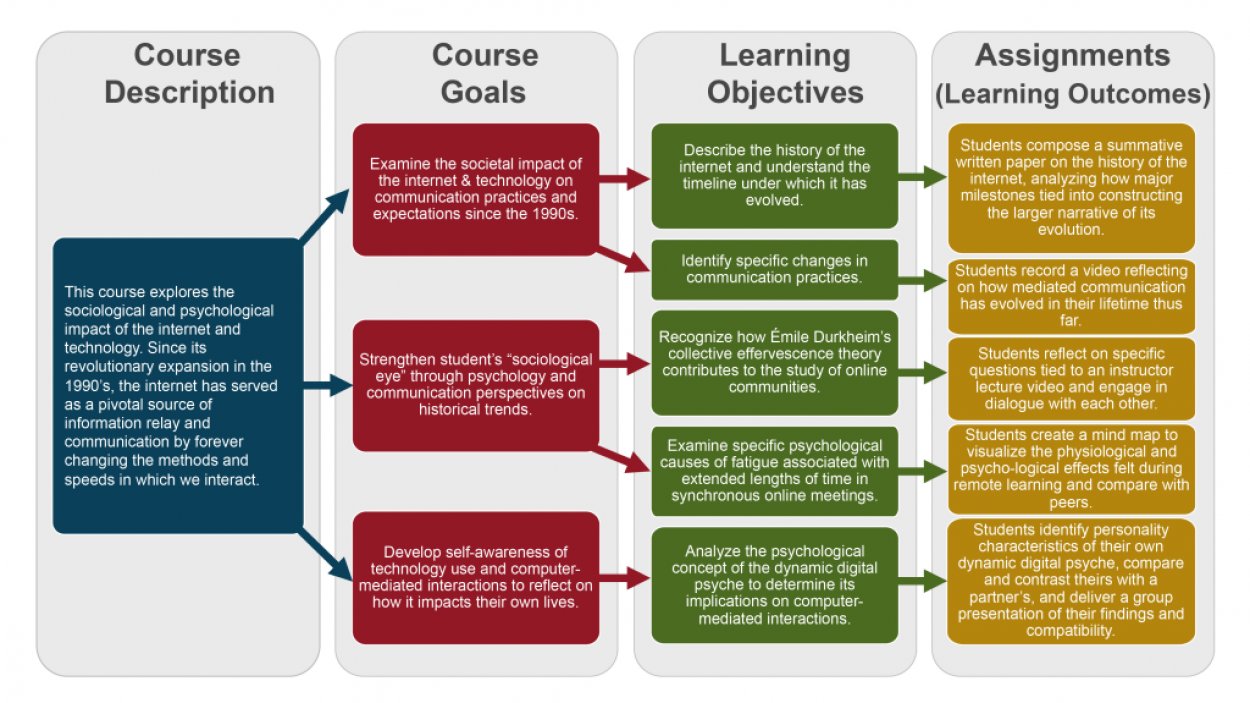What is Backward Course Design:
The Backward Course Design is a course design mindset that begins with a clear vision, the “end states”, of the learning, a clear plan of assessing the performance of the learning, and then works its way back to the design of the learning environment that is conducive to the intended learning objectives. In other words, it is a process to structure student learning based upon assessments that are intentionally designed to provide evidence that students have achieved the course goals.
In this course design mindset, decisions on the bits and bites of a course, ranging from the course activities, educational technology and tools, instructional content, to the pedagogical strategies, all center around and are all guided by the vision of the course.
Reasons to adopt the Backward Course Design approach:
- It helps you stay focused on the major learning objectives and the corresponding assessment activities.
- It helps you set achievable goals and expectations and prevent information overload.
- It helps you design the cadence of learning and assessment activities to scaffold learning; resulting in effective teaching and learning.
- It helps you explain thoroughly to the learners about the design of course activities; resulting in an increase in transparency of the purpose and the relevancy of the learning.
- It helps enable learner’s metacognition by controlling and self-regulating their own learning.
- It helps you make guided decisions on “hard” questions in terms of what topics to be included or not in the course; resulting in an increase in efficiency.
- It helps the planning, implementation and analysis of the learning assurance plan in your department/program, which is critical to the stakeholders and the accrediting bodies, resulting in the success of the program.
- It helps you design a quality course.

Three Phases:
There are three distinct phases for the Backward Course Design approach:
Phase I: Build a Vision
- Curriculum Analysis
- Course Competencies
- Knowledge
- Skills
- Attitudes
- Course Learning Outcomes (S.M.A.R.T.)
Phase II: Map the Course
- Modules: a structure to scaffold learning experiences.
- Unit/Module Learning Outcomes: identify them for each module.
- Assessments: determine acceptable evidence for each outcome at a different level.
- Instructional activities and materials: foster meaning engagement and active learning.
- Pedagogical strategies.
Phase III: Flesh Out the Content
- Develop content according to the Course Map.
Download templates:
- Template: Course Planner for Backward Design (Docx file)
Additional Resources:
- Design for Learning: Free ebook edited by Jason K. McDonald & Richard E. West.
- The Online Course Map Guide: Excellent instructional design guides.
- Learning Experience Canvas: a visual tool for planning.
- Backward Course Design: Indiana University
- Course Design Resources:
- Understanding by Design. Vanderbilt University Center for Teaching
- Instructional Design Strategies for Online Teaching
